Have you ever wondered what makes a product sustainable or planet-conscious? Is it just that extra eco added to its name? Of course, not – at least in theory.
It’s clear that the most important factor in this context is the material – but with a twist.
Material may be sustainable and green but before a product becomes takes its final form, there’s still a question of production, manufacturing, sometimes processing and delivery.
And that can make all the difference.
This is precisely why various organisations were founded – to provide a reliable and trustworthy stamp of approval on a given textile product. And that’s probably more important and valuable than the actual type of sustainable fabric if you really care what you’re paying for.
So next time you’re in the market for a new set of eco towels, make sure you read the label very carefully.
Don’t fall for any gimmicks.
Now that’s out of the way, we can delve a bit deeper and explore the strengths and weaknesses of all the planet-friendly fabrics out there. And make no mistake – they are different, often better suited for a specific purpose or setting.
Why do Sustainable Fabrics Matter?
Much like many other environmentally-conscious solutions, the goal is to reduce the impact on the planet by lowering energy and water usage, and minimising waste production – and whatever’s possible.
All that to help the planet and to address the alarming data concerning its not-so-distant future.
So why even wonder? Why does it seem to stir so much confusion? Is the quality of these materials worse? Not at all.
In many cases, it’s actually much better, especially compared to synthetics. So, the only catch here is the price, both for the brands as well as the clients.
Low price oftentimes means low costs, and when these are cut – so are some corners, more often than not. High road takes some sacrifice.
By all accounts – that bigger price tag is still worth it.
Organic Cotton
Organic cotton is basically cotton 2.0. Let’s focus on what’s the most important for the user first.
Its fibres are longer, which makes it more durable. At the same time, it’s softer and more absorbent than its traditional counterpart; a perfect choice if you’re looking for that perfect absorbent bath mat.
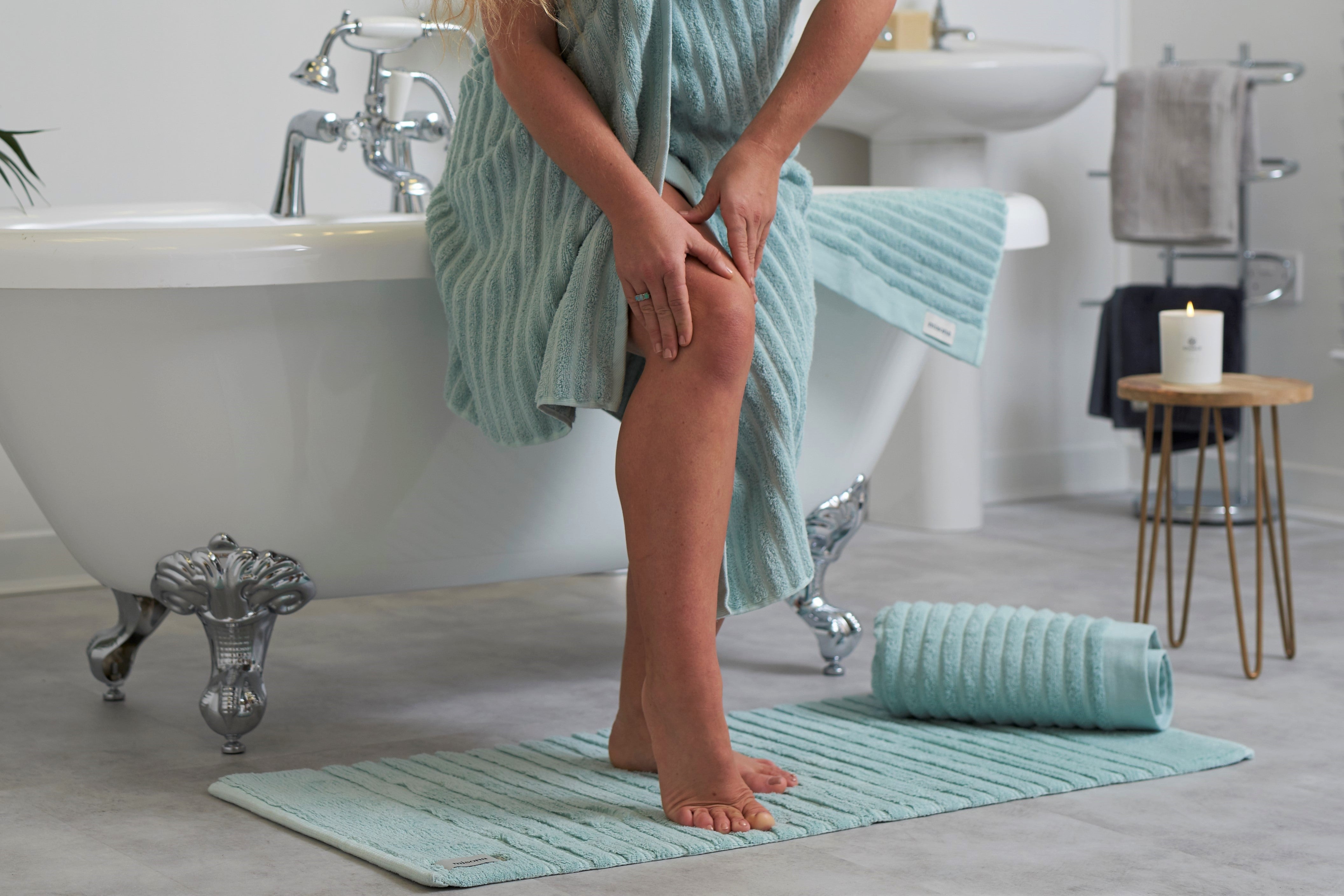
Thanks to natural hypoallergenic properties and its softness, it’s a far superior choice for those who suffer from allergies or have easily irritable skin.
Now, back to the environment – to produce 1kg of cotton you need about 10,000 litres of water.
Plus, chemicals, pesticides, quite often shady labour practices. It all adds up to a rather substantial impact. Organic cotton, while not ideal, is simply far more sustainable.
Bamboo
So many things about bamboo don’t make sense. It looks more like a tree, but it’s actually a type of tall, evergreen grass.
On top of that, it grows at an incredibly quick rate, some types can get up to 91 cm in one day, making it the fastest-growing plant in the world – with zero pesticides or chemicals.
With the right mix of cotton (preferably organic) and bamboo, you get a fabric that’s 4 times more absorbent than regular cotton, making it a perfect choice for the bathroom, which is the exact same mix we use to make our bamboo bath towels.
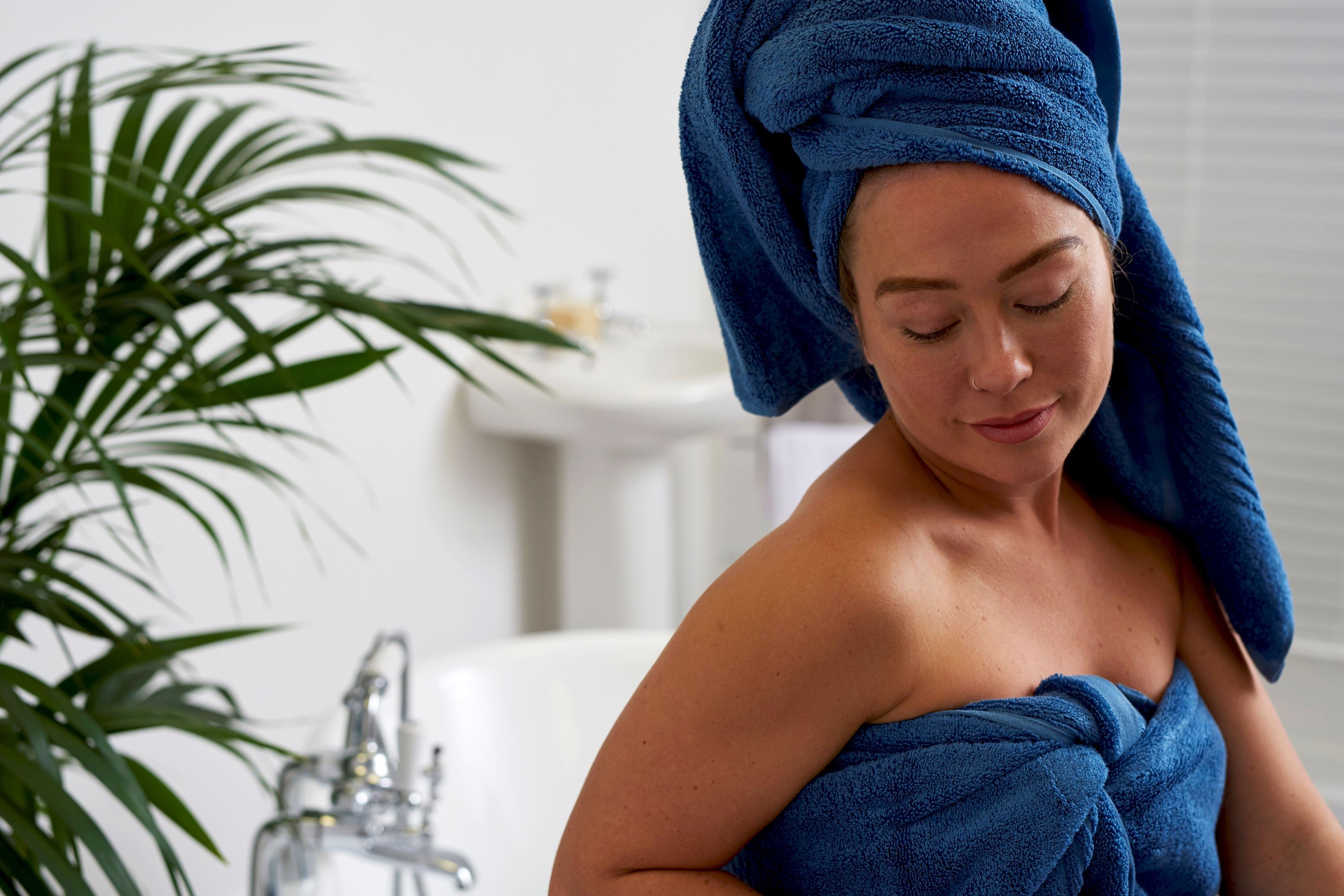
This is what makes it naturally hypoallergenic and anti-microbial. Now, bamboo fabrics, especially 100% rayon or viscose, have to be processed, often quite heavily, which is less than ideal in terms of sustainability.
There’s a greener way though – using its natural fibres. The actual process of extracting the natural yarn is quite expensive and labour-intensive while the final result is not the soft fabric we normally know it to be – it’s actually closer to hemp or linen.
Overall, while it can be a great sustainable option, it’s not always a fact. That just goes to show practices are far more important than just the material.
Hemp
Great for carbon sequestration, hemp is another viable option and a real up-and-comer in the world of sustainability. Although cultivated for hundreds of years, it seems only recently the world of fashion has started to truly appreciate its value.
It’s so versatile that nowadays, it’s also used in construction, food and cosmetics. It’s derived from the fibres of the hemp plant known as Cannabis sativa (often nicknamed marijuana’s sober cousin).
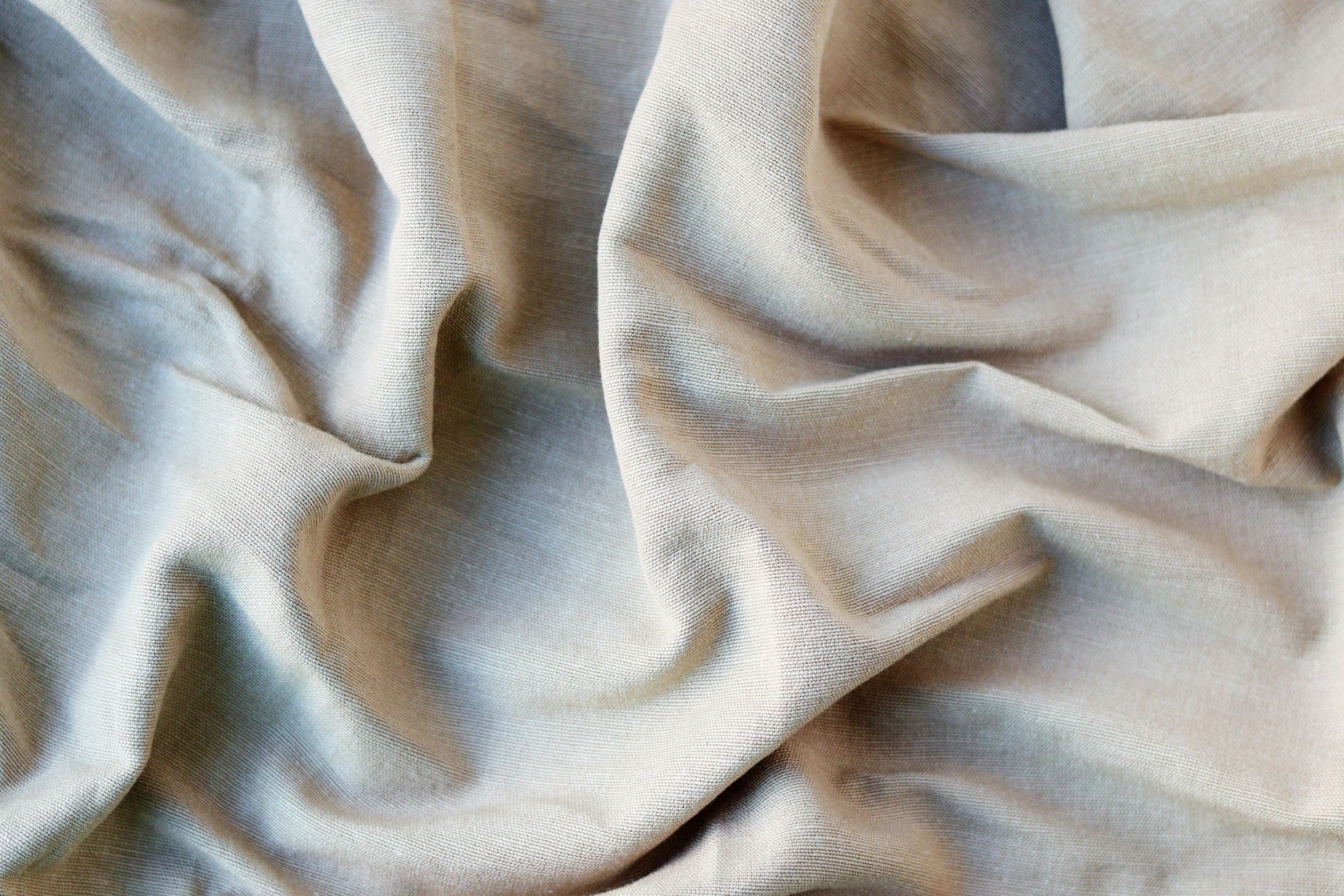
Of course, it makes a great fabric; keeps you warm when it’s cold, nice and cool when it’s hot, and gets softer with every wash. A popular choice for clothes, thanks to its high breathability, durability and hypoallergenic properties.
It requires very little water to grow, with minimal or no pesticide use. Once again, we have to turn to certifications to make sure it’s actually organic.
Linen
Much like hemp, it’s been known to humanity for a very long time. In this case, the star of the show is the flax plant.
It doesn’t need a lot of water or harmful pesticides and it’s so strong it can grow in soils of very poor quality – and every part of the plant is used.
But let’s focus on the fabric. Since its fibres are very dense, it’s quite difficult to change its colour. It takes a lot of bleaching, which can be quite a chemical-heavy process.
But if we stick to its natural hue, this issue simply goes away, making it a much more environmentally friendly choice.
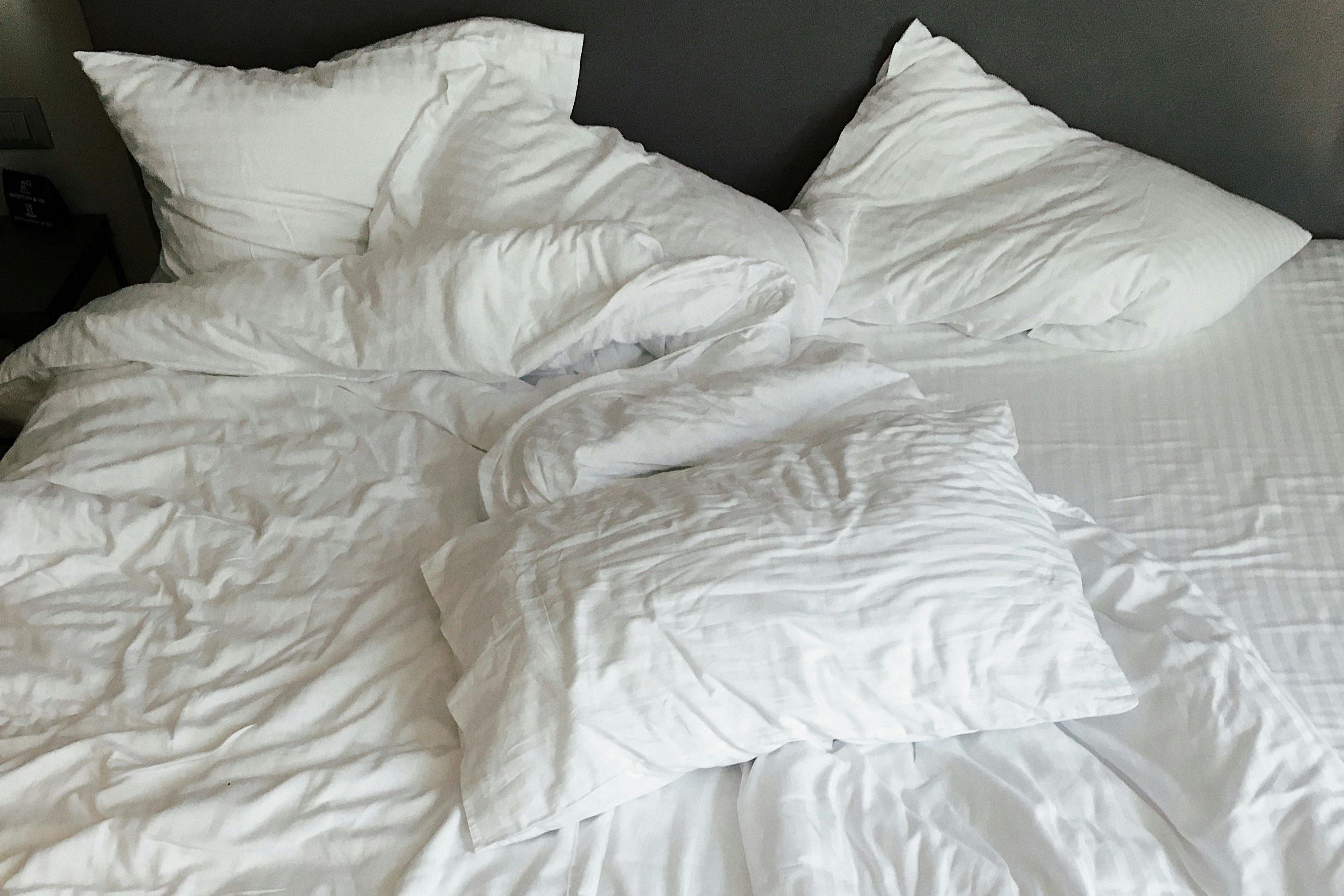
It’s often used for sheets, curtains and clothing. It’s a perfect option for summer – light, can withstand high temperatures and keep you cool all day long.
Tencel
Tencel Lyocell is the only fully man-made fabric on this list (MMCF – man-made cellulosic fibre). It’s relatively new and really innovative, created through dissolving wood pulp. It’s produced by a company located in Austria (Lenzing SA).
The idea itself has been around since the 1970s when a company called Enka developed the concept of lyocell fibres.
Again, it takes less water and chemicals to produce it – but there’s more. This semi-synthetic fabric is made in a closed-loop system, which means all the chemicals are recycled for further production.
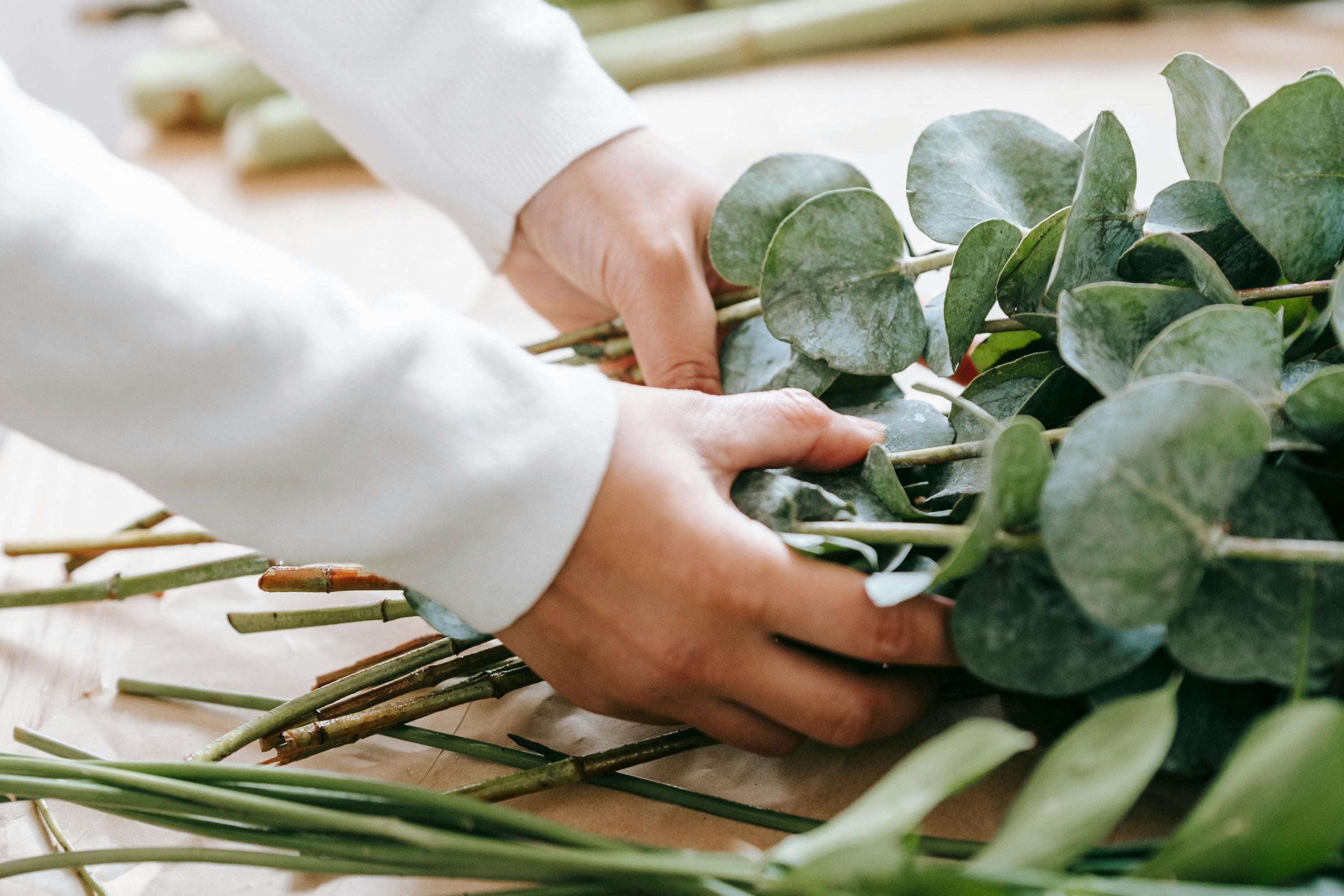
It uses responsibly sourced wood (typically eucalyptus) and offers high performance and durability, which makes it a great alternative to polyester.
Tencel lyocell is hypoallergenic, doesn’t cling and is 50% more absorbent than cotton. This versatility is exactly what makes it a viable replacement for silk, regular cotton, suede and even denim.
The Secret Fabric
This secret is no secret at all, but somehow it feels like a well-guarded knowledge only a select few know about. And it's quite simple – it’s not the fabric, but how we make it, proving once again that only responsible practices can help the planet.
No matter how green and eco-friendly the fabric is, if it’s not made with the well-being of Mother Earth in mind, it’s nothing more than just another buzzword.
Informed Decisions
But what can consumers do? At the end of the day, they’re not responsible for cultivation, supply chains and production, are they?
So, the best we can do is educate ourselves. Make informed decisions. Be aware.
It doesn’t take much – just look at the label for specific certificates next time you’re shopping for a new natural bath mat, set of towels, or clothes.
There’s no sustainability without little shared responsibility.

